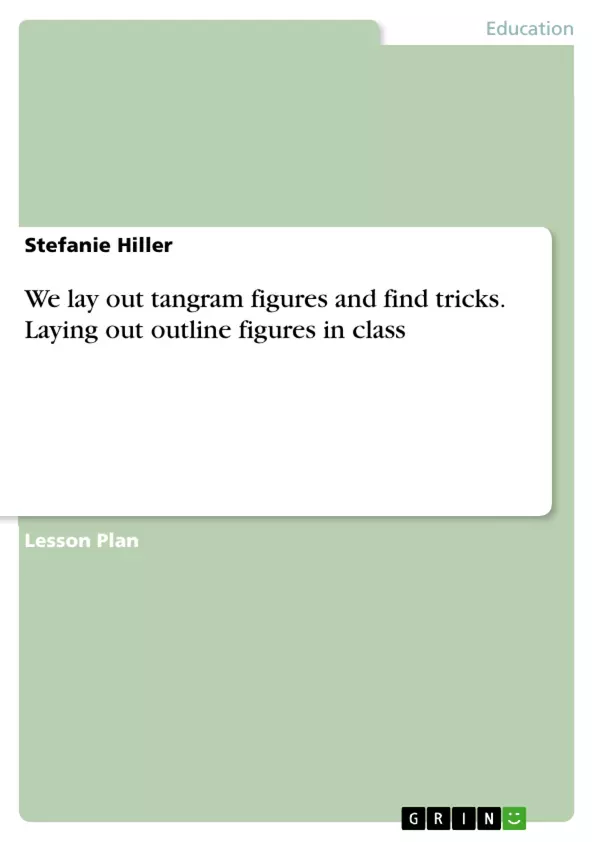"We play with shapes". It is an activity-oriented and creative examination of flat, basic geometric shapes through laying, re-laying and laying out in order to acquire spatial imagination, to promote visual perception skills and basic geometric experiences as well as to initiate a geometric language culture.
Inhaltsverzeichnis (Table of Contents)
- Theme of the series
- Theme of unity
- Structure of the series
- 1st unit: "We repeat the geometric shapes."
- 2nd unit: "We get to know the game Tangram and thus create a summer landscape."
- 3rd unit: "We lay out tangram figures and find tricks."
- 4th unit: "We recreate tangram figures and use our tricks."
- 5th unit: "We create a tangram file for free work."
- Core concerns of the unit
- Central work order
- Reflection mandate or guiding impulse for the reflection phase
- Justification of the core concern from a didactic and methodological point of view
- Factual analysis
- Didactic analysis
Zielsetzung und Themenschwerpunkte (Objectives and Key Themes)
The main objective of this lesson is to deepen students' basic geometric experiences, promote spatial imagination, and enhance visual perceptual ability through the use of the Tangram laying game. Students will also explore the relationships between various flat geometric shapes, including triangles, rectangles, squares, and parallelograms.
- Spatial Imagination
- Visual Perceptual Ability
- Geometric Concepts
- Laying Strategies
- Didactic Principles in Geometry Instruction
Zusammenfassung der Kapitel (Chapter Summaries)
- Theme of the series: This section introduces the overarching theme of the series, "We play with forms," which focuses on exploring flat geometric shapes through hands-on activities to develop spatial imagination, visual perceptivity, and geometric language skills.
- Theme of unity: This section details the specific theme of the lesson, "We lay out tangram figures and find tricks," which aims to expand on previously learned concepts by using all seven parts of the Tangram to create outline figures and explore various laying strategies.
- Structure of the series: This section provides a breakdown of the entire series, outlining the different units and their objectives. The first unit focuses on revisiting geometric shapes, while subsequent units introduce the Tangram game and its various applications.
- Core concerns of the unit: This section highlights the central objective of the unit, which is to expand students' geometric experiences, spatial imagination, and visual perceptual skills by engaging them in the Tangram laying game.
- Central work order: This section presents the primary instruction for the students, which is to lay out figures while adhering to the Tangram rules.
- Reflection mandate or guiding impulse for the reflection phase: This section provides guidance for the reflection phase of the lesson, encouraging students to discover "tricks" that help them lay out figures effectively.
- Factual analysis: This section delves into the history and mechanics of the Tangram game, explaining the basic shapes and rules that govern its gameplay. It also outlines various strategies commonly employed by students when solving Tangram puzzles.
- Didactic analysis: This section examines the didactic principles underpinning the use of Tangram in geometry instruction. It emphasizes the importance of action-based learning and how Tangram encourages students to develop visual perception, spatial reasoning, and geometric understanding.
Schlüsselwörter (Keywords)
This lesson focuses on the key concepts of geometric shapes, spatial imagination, visual perception, and laying strategies as applied to the Tangram game. It delves into the didactics of geometry instruction, emphasizing the importance of active and discovery-based learning in developing students' spatial and geometric understanding.
- Quote paper
- Stefanie Hiller (Author), 2009, We lay out tangram figures and find tricks. Laying out outline figures in class, Munich, GRIN Verlag, https://www.grin.com/document/1193903



